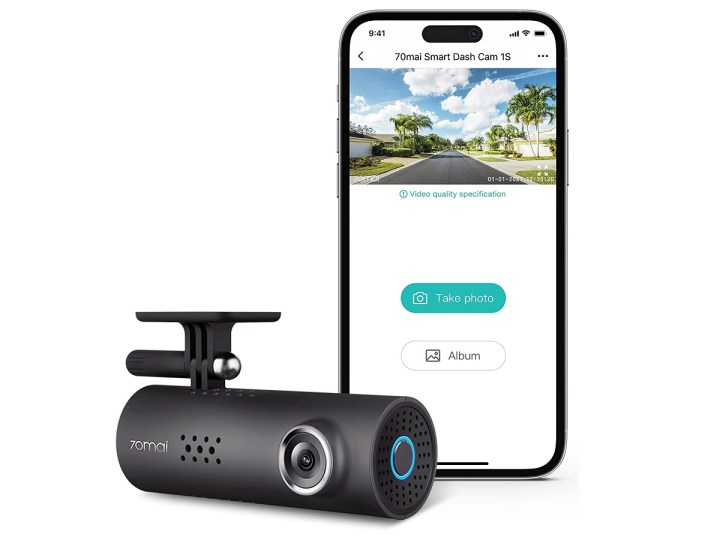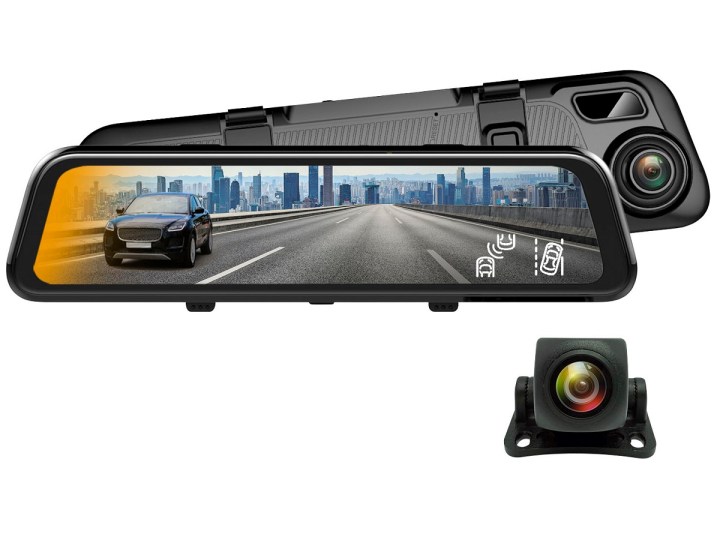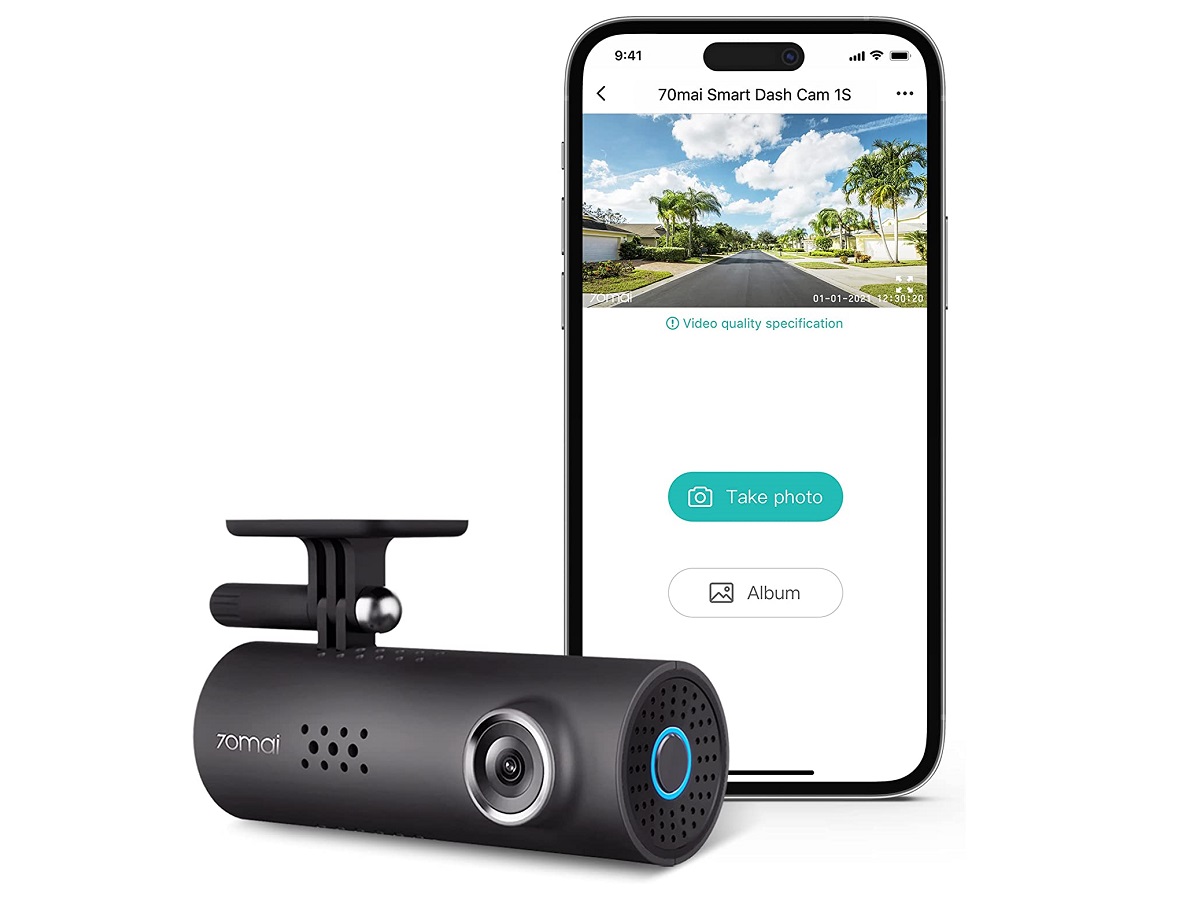The best dash cams are a necessary investment for car owners, especially those who regularly drive through busy roads or own an expensive vehicle. These recording devices provide an extra layer of protection for you and your family’s peace of mind, and they can produce evidence to give to the authorities and your insurance company in case of an accident. They come in a wide range of models and prices, so to help you decide which one to purchase, we’ve rounded up the best dash cam deals that you can shop right now.
Today’s Best Dash Cam Deals
70mai Smart Dash Cam 1S — $32, was $50

The 70mai Smart Dash Cam 1S is the cheapest option in this list, but it doesn’t feel like it because it’s packed with features. The dash cam, which supports microSD memory cards of up to 64GB, records footage at 1080p Full HD resolution with night vision capabilities thanks to its Sony IMX307 image processor and f/2.2 aperture. With its built-in G sensor, the dash cam will detect an accident and lock footage to prevent overwrites. You can use voice commands to ask the dash cam to take photos or to start recording videos, and you can use its accompanying app to watch real-time footage and to download files to your phone.
Kenwood DRV-A301W Dash Cam — $120

The Kenwood DRV-A301W Dash Cam captures 1080p Full HD videos at 30 fps, at a 136-degree diagonal viewing angle for expansive coverage at what’s happening in front of you. The dash cam is equipped with a G-sensor that initiates emergency video file backups when it detects an accident, a GPS receiver to log data such as speed and location, and a microphone to capture audio. You can operate the dash cam through its 2.7-inch LCD screen, but you can also view recorded videos through the Kenwood Dash Cam Manager app. Every purchase of the Kenwood DRV-A301W Dash Cam comes with a 16GB microSD card, but you can expand its storage further as it supports up to 256GB microSD cards.
Thinkware U1000 4K Dash Cam with Rear Camera Kit — $500

Even with the advent of 4K quality displays, content, and just a general push towards higher-resolution experiences, you don’t generally see ultra-HD dashcams, let alone systems that come with a rear camera solution too. But this Thinkware system does, plus it’s equipped with an 8.42-megapixel Sony Starvis image sensor and has a wide 150-degree viewing angle. It can also capture pre-event or pre-ride footage in parking surveillance mode, which is helpful if you have to leave your vehicle parked somewhere remote for an extended period. Built-in WiFi and GPS offer convenient connectivity and tracking options, with advanced driver assistance from lane departure and front collision warnings. It will help you stay safe on the road or parked, and that’s impressive enough.
Nexar Beam GPS Dash Cam — $170, was $190

The Nexar Beam GPS Dash Cam is a compact device that can easily be hidden behind your vehicle’s rearview mirror, where it will record videos with a 135-degree angle and 1080p Full HD quality. When the dash cam detects a collision or a sudden brake, it saves the recorded footage on the Nexar app, with the clips automatically backed up on your free and unlimited Nexar cloud account. The dash cam can also sense impact when your car is parked, and will seamless stream live footage to the app whenever you drive. If you ever find yourself in an accident, the Nexar app can create a report that includes video footage, driving speed, and location, which you can use for insurance claims.
Rexing M2 2k Front and Rear Mirror Dash Cam — $200

The Rexing M2 2k Front and Rear Mirror Dash Cam features a camera that attaches to your rear view mirror, and a separate camera that you can install at the back of your car. The 12-inch touchscreen can show the footage from either the front camera or the back camera, with 2K video in front and Full HD video in the rear, with enhanced night vision and a built-in microphone to also record audio. Other features of the dash cam include blind spot detection, lane change assistance, cross traffic alerts, and collision detection. The dash cam supports up to 256GB microSD cards, and it also comes with a GPS Logger to record information such as the date, time, and location of your trips.
Nextbase 622GW 4K Dash Cam — $380, was $400

For top-quality footage of your travels, go for the Nextbase 622GW 4K Dash Cam, which records at up to 4K Ultra HD resolution at 30 fps. The dash cam also offers night vision for clear videos even in the darkest roads, image stabilization that reduces vibrations to improve image quality, and Extreme Weather Mode that uses special algorithms to ensure clear footage in any kind of driving condition. In case of an accident, what3words will provide your location to emergency services, which will be contacted by the dash cam’s emergency SOS feature. The Nextbase 622GW 4K Dash Cam is compatible with Amazon’s Alexa, so you can use voice commands for functions such as controlling the device, checking the weather, and playing music.
How to Choose a Dash Cam
Which dash cam you choose depends on your needs. Every dash cam will obviously give you a frontside view of what’s going on ahead of you — the cheapest offering only this view. More expensive cameras will either provide you with a view inside your car, or a secondary camera that you can place in your rear windshield to see behind your car.
While front view-only cameras are cheaper, we do recommend cameras that offer either interior or rearview cameras as well. Remember, accidents won’t always happen in front of you — sometimes you’ll be hit from behind. Rideshare drivers should choose a camera that offers an interior view as well because in the event of an incident, you’ll want evidence of what is going on inside the car as well.
We’d also recommend a camera with night vision capabilities both inside and out. At night, cheaper dash cams won’t provide the detail you need to make the footage useful. Again, for rideshare drivers night vision inside will be preferable — many of us drive at night, so being able to see what’s going on inside the car clearly in the dark is beneficial.
As far as resolution goes, look for a camera with a resolution of at least 1080p. You’ll also want to look at some sample footage first (many dash cams have reviews on YouTube that include this). Some cameras perform better than others. While there are 4K dash cams now available, in most cases, you’ll likely be able to settle for 1080p without losing much picture clarity.
Do dash cams lower insurance?
No. As far as we know at the moment, no insurance companies provide any discount for installing a dash cam inside your car. However, having a dash cam installed could keep your rates low in the long run. In many insurance claims for accidents, what happens can quickly become a case of “he said, she said.” Without video evidence, you could find yourself partially at fault for an accident that might not have been your fault at all. Dash cam video could help keep your rates lower since you’ll have a video of what happened in the accident.
Do dash cams have night vision?
A majority of midrange and higher-end dash cams will have night vision — and even some cheaper cams, too. What we will caution is not all night vision is created equal. We’ve seen considerable variability in the quality of night vision footage between dash cams — even ones of similar price. Take some time before you buy to look over sample night-vision footage, so you get the best bang for your buck.
Do dash cams record sound?
Some do, and some don’t — although a vast majority will. Do remember that the sound recorded will be from inside your vehicle and not outside. As a result, anything happening outside the car that you might want to hear will not be as audible as what’s going inside the vehicle. If you’re a rideshare driver, we certainly recommend purchasing a dash cam that does, however.
Do dash cams need to be plugged in?
While some dash cams can be charged up and run without being always plugged in, our recommendation is to have your dash cam continuously plugged into a source of power. The last thing you’ll want during an incident is to find your dash cam’s battery ran out.

